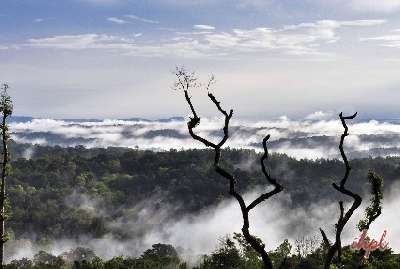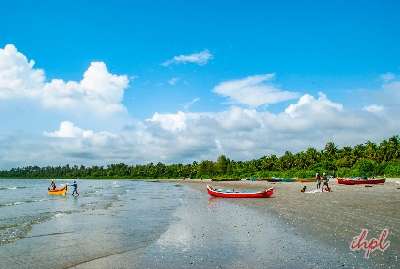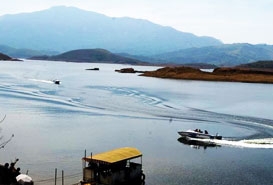Made up of 2 broken patches- Tholpetty and Muthanga, Wayanad Wildlife Sanctuary covers an area of 344.44 sq km. While the former part lies northwards of a district that is placed alongside Thirunelli, Muthanga is southwards of Wayanad, around 18 km from Sulthan Bathery. The rugged wild charm attracts a crazy number of travelers from all around. This wildlife reserve is also close to Nagarhole Range of Karnataka and Kurichiat Ranges within Kerala.
Check out Kerala Tour Packages, Trivandrum Tour Packages, Munnar Tour Packages, Kochi Tour Packages
General information
Declared a sanctuary in 1973, the thick jungles of this region were the living quarters of Pazhassi Raja when he was rebelling against the British. The sanctuary lies under Project Elephant. Elephants can be spotted roaming around freely all across.
Visitors need to get prior permission to visit this place. Entry till only the outer zone is allowed. Around 25 km wide, the inner zone is only accessible for wardens and researchers.
Topography
Wildlife sanctuary of Wayanad can be characterized through lush greenery and undulant hills. Amongst the peaks here between altitudes of 2100 to 2600 feet, the highest peak is Karotthimala, with a height of 3800 feet.
Climate
The climate remains cool because of an elevated landscape. During the winter season, the temperature dips down to 13 degree Celsius and in summers, it rises up to 32 degree Celsius. Wayanad receives a good rainfall of around 2200 mm, with heavy rainfall between June and August.
Explore 8 night 9 days Kerala tour package
Forest types and flora
Rich flora accompanies you white you travel from Muthanga to Tholpetty. The road is dotted with different kinds of plants including ginger bushes, bamboo trees and so on. Even paddy fields fall, en-route.
Most part of the sanctuary is covered with dry and moist deciduous forest but the visitors can also spot semi-evergreen patches. However, a mix of most deciduous forest with bamboo groves can also be seen here.
Plantations of silver oak, rosewood, eucalyptus and teak covers almost one third of the sanctuary along with the presence of marshy lands. Scientific care is required to keep the flora and rare plants rich. Some of the dominant species of trees here are Dalbergia latifolia (Rosewood), Careya arborea (Pezhu), Stereospermum colias (Padiri), Kydia calycina (Vellachadachi), Terminatia chebula (Kadukka), and Anogeissus latifolia (Axle wood).
Creepers, ground flora, shrubs like Randia ulginosa, Helicters isora as well as herbs like Rauvolfia, Ageratum conizioides, and sida cordifolia can be seen here. Abundant woody climbers like Calycopteries floribunda and Entada scandens also grow here.
Fauna
While herds of deer and elephants are a regular sight, Wayand is also home to a vast variety of other animals too such as panther, tiger and other big cats. Bison, langurs, bonnet macaques, Malabar squirrel, monkeys and bear are also seen here. The vast variety of animals also include the rarely found Slender Loris.
Reptiles’ varietyin Wayanad include Pit vipers, green whip snake, coral snake and golden tree snake, flap shell turtles, crocodiles, chameleon, termite hill gecko, skinks and flying lizard.
The park has as many as 216 avifauna species. Spot colorful birds like Malabar whistling thrush, jungle fowl, three- toed wood pecker, crested honey buzzard, cuckoo, paradise flycatcher, golden oriole, peacock, painted bush quail, etc. One of the most amazing sightings here has been a rare blue bearded bee-eater, world’s largest bee-eater.
Wayanad wildlife sanctuary also has 30 species of amphibians, including Bi-coloured frog, triangle-spotted Ramnella, Ceylon kaliula, Bi-coloured frog, Malabar gliding frog and more.
A huge variety of fish call the rivers and streams of Wayanad their home. These include giantdanio (Danio aequipinnatus), Ariza labeo (Labeo ariza), Wayanad barb (Puntius wynaadensis), korhi barb (P. micropogon), Wayanad mystus (Mystus montanus), snake heads (Chann asp.) and more.
Browse through our Kerala tour packages from Hyderabad, Kerala Tour Package from Chennai
Wildlife Safari in Wayanad
Entry to Muthanga as well as Tholpetty is allowed through a jeep safari that can be arranged at the entry gate of the sanctuary. Both these areas are closed during monsoon months of June, July and August.
For wildlife spotting, two-hour jeep safaris in Wayanad are available at Muthanga as well as Tholpetty. Visitors need to register and secure themselves a jeep for themselves at least one hours before the morning and afternoon safari timings. Entry to limited number of jeeps and guides at one time inside the park.
Fee
- Indian – INR 115
- Foreigner – INR 300
- Camera – INR 40
- Video – INR 225
Timings
07:00 – 10:00 AM and 03:00 – 05:00 PM












